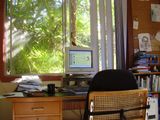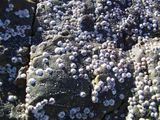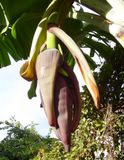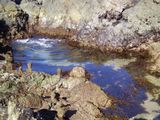I'm warm in the
Ponderosa, which is good because I didn't like the knocking that emerged from the fan heater this morning. I'm certainly warmer than I was two days ago sitting by the Pacific Highway.

I know my Sandy Beach Almanac boundaries are supposed to be set at 1,000 paces from the cabin, but kindly allow me another 1,000 paces just today for the purposes of talking about
The Traffic Survey. I said I would discuss "Nature and life", and this is about life within 2,000 paces of my door.
Say it like this, in your best Hollywood monster accent (Transylvanian or cultured British) like: "the purposes of ....
The ... Traffic Survey", as though you were saying "Mwah-hahahaha!" or "We have ways of making you talk".
I took up
The Traffic Survey offer from my Job Network Provider, just in case another didn't come along. This was a wise move. You see, the dole office -- welfare, to my American friends -- requires my registration with a government-approved
Job Network Provider (mwah-hahahaha!!!) which will help me find work, and I have told them I am available anywhere in a 1,000-kilometre (that's kilometres, not paces) range, for a job in any of four different industries, such as journalism, Internet and PR. One can't be choosy when one has been unemployed for five years. In twelve months they have sent me just one job to apply for. Signwriter. "I can't apply for this, I'm sorry". "Why not?" "Signwriting is a trade that requires an apprenticeship and four years of college. I haven't quite finished. And I can't draw a straight line." "Oh."
The next job I was offered came up this week. One day's work on ...
The ... Traffic Survey (are you reading with the accent? Cool). Feeling honoured and finally seeing a point in having a university degree and 35 years work experience, I grabbed it.
My alarm went off at 4.20 am, which is more like the time I go to bed than wake up, and much better my usual way, trust me. Less than 2,000 paces from the
Ponderosa I sat from 5 am till 1 pm three metres from trucks hurtling past at 100 kmh (60 mph). Then I recalled that at the (unpaid) introductory session on Monday they had used the inviting term "half-hour breaks". Now, eight hours in a plastic chair, swept by the dusty, gritty cyclone caused by convoys of 16-wheelers, recording number plates and hours and minutes on a clipboard, gets a bloke's bum pretty sore, and legs pretty stiff. It was time to stretchem. I asked permission to speak and permission to be human for 30 minutes, and it was granted. Note re Nature: I did see some lorikeets just miss getting hit by a Mack hauling Ikea furniture.
Half an hour later, and back to the wake of the trucks and the intense concentration required to do the job -- for another seven-hour shift. A 14-hour day at $12.50 an hour. "Half-hour breaks", plural, had meant for everyone, plural. We discovered on the job that in the case of the individual, the singular form of the noun was the actual meaning. Big business semantics can be so confusing to the unemployed.
There were others like me up and down the Pacific Highway, counting number plates for an unrevealed purpose (an educated guess; the imminent destruction of Sandy Beach and Hearns Lake by big developers from Sydney). At least a dozen people told me how much they hated and resented it; one young woman said she didn't mind it because it was better than being stuck at home all day. That blew my mind, but of course I haven't seen what she lives in.
I and the other lumpen proletariat of this region will be paid in two weeks. We will pay tax on it. And the dole office will reduce our dole by an amount calculated on the gross pay, not the post-tax net pay.
Quick Quiz: Why do they get you to do two days' work in one long day? Why do they not provide chairs, tea, coffee, lunch, toilets, or six breaks as workers get in normal jobs over 14 hours of work? Answer: Because they can. Because there is a large pool of unemployed people who the media label "dole bludgers" who "choose" to live on $200 a week. The government announced two days ago that unemployed people my age will soon have to "work for the dole",
ie, do jobs like this for $10 a week. Giving them much less time to find real work, of course. The Australian community thinks this is a
Very Sensible Idea because
A Current Affair tells them we have
Too Many Dole Bludgers (accent, please).
My
The Traffic Survey partner, who had to call the vehicle registration numbers out to me in the roar of the traffic, was a very nice young chap and that made up for his mild dyslexia and soft voice. Most of the time I had to make the numbers up.
Mwah-hahahahahahah!!! ...
Mwah-hahahah!!! Mwah-hahahahahahah!!! ...
Mwah-hahahahahahah-hahaha-hahaha!!!




































 Four seasons in one day is quite enough. That's how it's been today. For a while I was freezing and then too hot, now it's dark and gloomy like a Winter's day. The only exercise I've had today has been layering and removing clothes. That's fine; I was ever of the opinion that if you're well you don't need exercise, and if you're sick you shouldn't have it.
Four seasons in one day is quite enough. That's how it's been today. For a while I was freezing and then too hot, now it's dark and gloomy like a Winter's day. The only exercise I've had today has been layering and removing clothes. That's fine; I was ever of the opinion that if you're well you don't need exercise, and if you're sick you shouldn't have it.